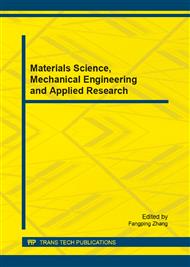p.3
p.7
p.12
p.16
p.20
p.24
p.28
p.33
p.40
Acoustic Emission Study of Corrosion Fatigue Crack Propagation Mechanism Identification
Abstract:
Acoustic emission signals were continuously monitored during corrosion fatigue crack propagation for X52 steel in 3.5% NaCl and AZ31 magnesium alloy in 0.1%NaCl solution. There are different microstructure and corrosion fatigue crack propagation mechanism for X52 steel and AZ31B magnesium alloy. Combined with the existing research results of LY12CZ and 7075-T6 aluminum alloys, the acoustic emission waveform parameter, the frequency centroid ratio, was tried to use as a criterion to distinguish the corrosion fatigue crack propagation mechanism for anodic dissolution and hydrogen embrittlement. The results also show that the nature of the acoustic emission source determines the main characteristics of the signal parameters and waveforms, and little to do with the experimental material.
Info:
Periodical:
Pages:
20-23
Citation:
Online since:
September 2014
Authors:
Price:
Сopyright:
© 2014 Trans Tech Publications Ltd. All Rights Reserved
Share:
Citation:


